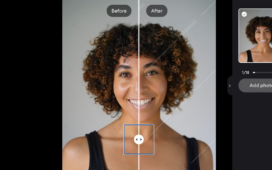The best phones in 2024, including the iPhone 16 Pro, Galaxy S24 Ultra and Pixel 9 Pro all have one thing in common: rad camera setups. Their multicamera arrays are all capable of taking stunning images that rival shots you’d get from professional cameras. But that was also the case for phones launched last year, and beyond a few tweaks, the camera hardware hasn’t really moved on. What’s new is the deeper integration of AI into our image-taking process. And as a pro photographer, I’m not a fan.
Google’s Pixel 9 Pro is a great all-around phone with a slick design and capable processor. And though its camera is superb, it’s using hardware that’s almost identical to what’s in last year’s Pixel 8 Pro. The biggest changes to the phone’s imaging skills came in the form of various generative AI tools. Magic Editor lets you easily add or change elements in your image — such as replacing a dull gray sky with a beautiful sunset — while Pixel Studio lets you create an infinite variety of generative images from prompts, with often bizarre results.
But most of Google’s new tools are about fiddling with the image after you’ve taken it, with few upgrades to help during the actual image-making stage. Apple did focus a little more on the taking of images with the iPhone 16, by offering deeper control over color tones in its new Photographic Styles, but the camera’s hardware again remained largely unchanged from that of its predecessor. I applauded the Xiaomi 14 Ultra’s amazing camera setup earlier this year, but even its large, 1 inch–type image sensor, that’s actually not an inch in size, isn’t brand new. Xiaomi’s own Mi 12S Ultra launched with the same-size sensor in 2022, as did the Panasonic CM1 way back in 2015.
The Pixel 9 Pro’s camera hardware barely changed over the Pixel 8 Pro’s.
So while there’s been little to say about new camera hardware this year, almost everyone has had a lot to say about AI.
AI has long been used in phone cameras, just not in the way we think of generative AI nowadays. Apple’s DeepFusion technology for better colors, Google’s upscaling for sharper zoom shots or even just plain old HDR exposure-blending all use some kind of artificial intelligence and machine learning to decide what to do with your photos. Even using auto settings on your phone camera — or a regular mirrorless camera, even — is using AI to some extent, because it means an algorithm is deciding on the settings required to capture a scene at its “best.”
For the most part, this sort of AI in phone cameras is helpful, as it makes up for a lot of the shortcomings of your phone’s tiny image sensor. Multiple exposures can be instantly blended for better dynamic range, and advanced denoising algorithms strip out the crud captured in low-light settings to allow for bright, sharp night-mode images.
But many of the AI tools in photography in the past year have focused on generative image making and manipulating an image you’ve already taken. Instagram, Facebook and Threads are increasingly flooded with fake images, and I worry that building these tools directly into our phones simply normalizes generative image production and detracts from the process of taking a real photograph. After all, why bother going to the effort of revisiting a scene multiple times to capture a beautiful sunset when you can simply fake it using AI?
Using generative AI to create weird images like this is fun, but it’s hardly a replacement for true photography.
It’s not that I have a problem with generative AI images. I don’t especially, and I don’t think they’re going to “kill photography” in the way that many people seem to think. But I do feel that phonemakers have stopped trying to improve their cameras in favor of simply slapping in AI tools to make up for a lack of true innovation — it’s cheaper to experiment with software than it is to develop new hardware.
But there’s still a huge market for “true” photography. Though phone cameras arguably demolished the market for compact cameras, things are changing, with a premium compact camera like Fujifilm’s X100VI proving so popular that it’s remained on back order since it launched at the beginning of the year. Even older X100 generations often sell for more used than they did new.
Then there’s the huge rise in popularity of film photography, with both rolls of film and cameras like the Leica M6, Contax G2 and many others absolutely skyrocketing in price due to increased demand. Clearly, there remains a massive interest in the art of taking photos; in a recent CNET poll, 38% of people said that better cameras are a main motivation in buying a new phone, while only 18% are driven by AI integration. As phones like the Pixel 9 continue to lean heavily into AI, they risk alienating the huge number of people who want a great camera to capture authentic moments.
No AI here; one of my favorite street photos from the Xiaomi 14 Ultra looks amazing in black and white. I hope this phone’s follow-up pushes camera tech forward in ways beyond AI additions.
For me, as both a professional photographer and someone who simply loves capturing images, AI has little to no place in my workflow. I want a camera phone that can record a scene as I see it, not simply fake it afterward using generative models. I’m looking forward to Xiaomi’s 15 Ultra and the iPhone 17 Pro next year, but I want to see a continued push for better image quality at a hardware level, with bigger sensors and wider lenses.
Regardless, AI will increasingly be a dominant part of all phones, with Apple Intelligence, Google’s Gemini and Samsung’s Galaxy AI continuing to weave deeper into all areas of our mobile lives. But I hope that in 2025, manufacturers remember that while AI has its place, it can’t replace the joy of being out in the world, capturing images that preserve authentic memories.













